Media | Articles
13 tech details that make BMW R18 a retro-modern marvel
When BMW Motorrad opted to attack the cruiser segment, it went all-in with the largest boxer engine in corporate history. Thoroughly modern but strongly reflecting BMW’s historical designs, the R18 uniquely combines performance with heritage. Here is some of the technological firepower lurking under that elegant black-and-white tuxedo paintjob.
Boxer engine
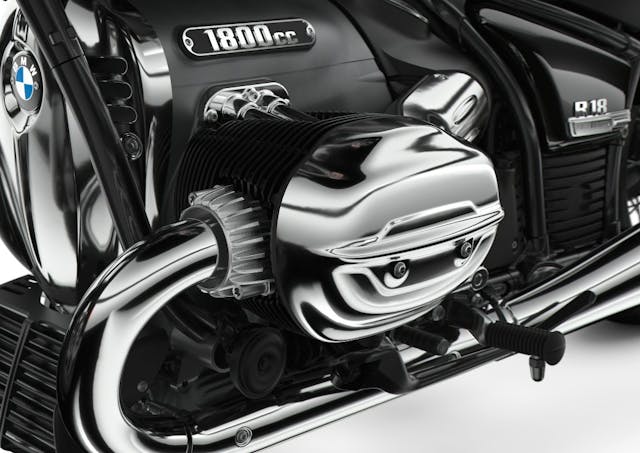
If the R18 engine looks big that’s because it is—1802 cc in a flat-twin design. That would be like a Porsche flat-six displacing 5.4 liters. Using oversquare bore-and-stroke dimensions (107.1 x 100 mm), 9.6:1 pistons and four pushrod- and rocker-arm operated valves per cylinder, the mill produces a claimed 91 hp at 4750 rpm and 116 lb-ft of torque at 3000 rpm. BMW further reports that at least 110 lb-ft of torque is delivered from 2000 to 4000 rpm—right where most riders need it, most of the time.
BMW selected pushrod architecture in part for aesthetic reasons, and the chromed pushrod tubes are plainly visible atop each cylinder. Interestingly, the valvetrain uses two camshafts (one each for the left and right cylinders) driven by a Hy-Vo chain with an automatic hydraulic tensioner. Valve lash adjustment is via screw and locknut—easy enough for engaged owners.
And did we mention it’s big? The engine and 6-speed gearbox assembly weighs 244 pounds, a third of the bike’s 761-pound curb weight.
Ride-by-wire throttle
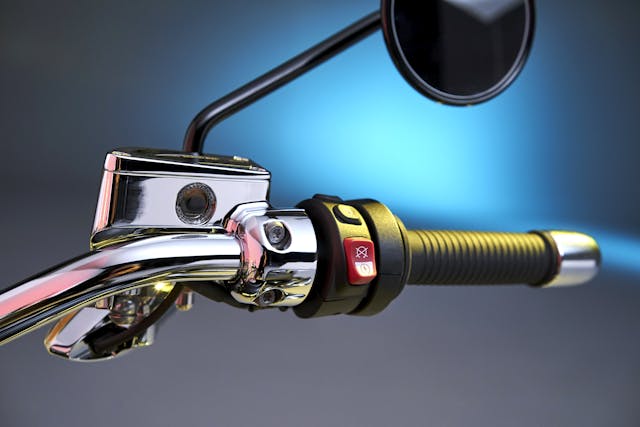
Forget carburetors—they are long gone on big streetbikes, man. What’s more, the BMW’s EFI system is a ride-by-wire affair that replaces the traditional throttle cable with a sensor that sends an electrical signal to an ECU, which in turn opens or closes the throttle valves.
Marketplace
Buy and sell classics with confidence
Air-oil cooling
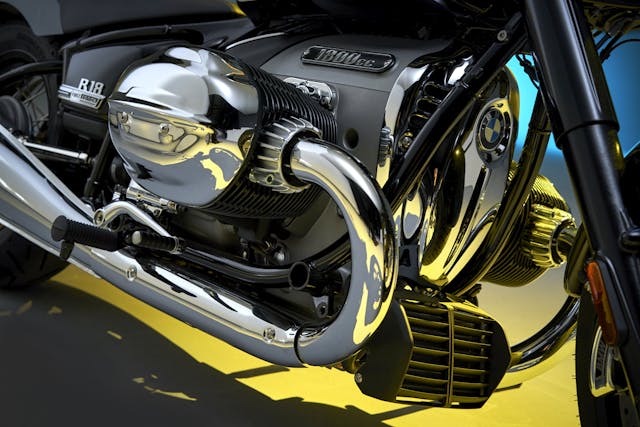
Virtually all cars and many motorcycles use liquid cooling, but not the R18. It uses a combination of air and oil cooling, preserving—in some form—the BMW’s historic air-cooled tradition. An oil cooler rides below the double cradle tube frame in front, behind the front wheel, to help manage engine temperatures.
Open shaft drive
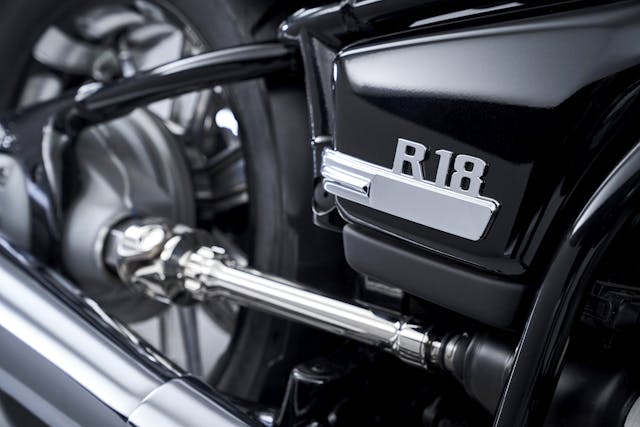
In a nod to early BMW bikes with exposed driveshafts, the R18 has one too. This one connects the six-speed gearbox with the rear axle via a sealed constant velocity joint in front and an exposed universal joint in back. The entire assembly is nickel-plated for style.
Transponder key fob
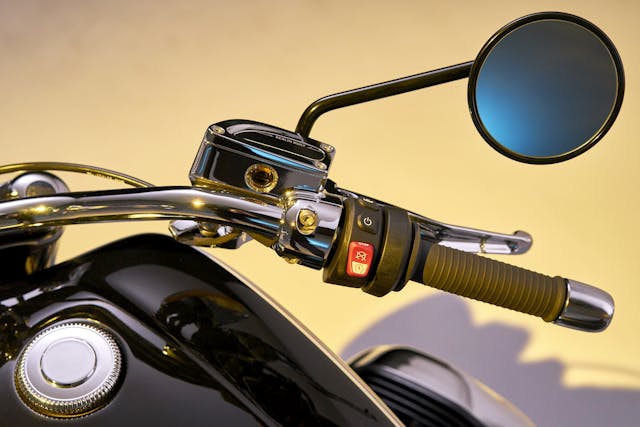
Like many new cars, the R18 foregoes a key-type ignition switch for an electronic transponder. With this in your pocket, just tap a button on the right handlebar to active the bike’s electrical system, then tag the starter button to fire the engine. In a throwback move, BMW integrates a mechanical key into the transponder so you can physically lock the fork.
Engine drag torque control
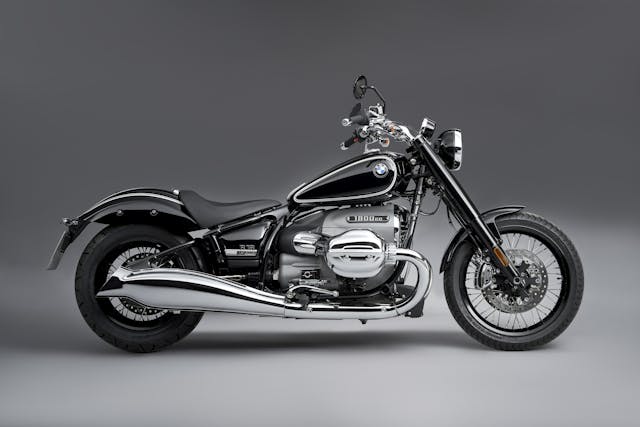
Big motorcycle engines like the R18’s can cause rear-tire slip if a ham-fisted rider closes the throttle suddenly. BMW thus imbued the R18 with car-derived “engine drag torque control,” (“MSR” in BMW-speak), which allows the ECU to automatically modulate the throttle in order to keep the rear wheel from slipping under such conditions.
Slipper clutch
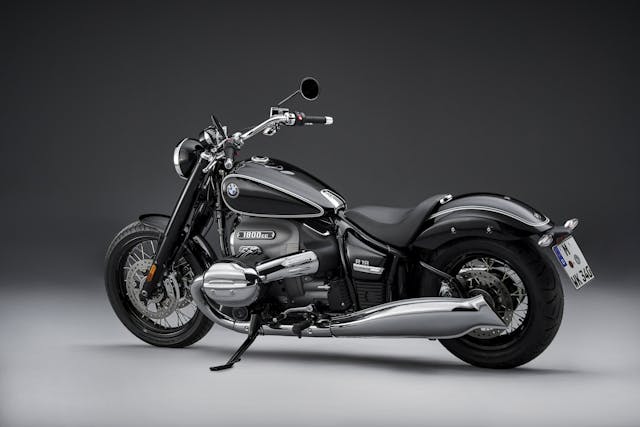
Aggressive downshifting can hop or chatter the back tire on some bikes, reducing traction and stability. To eliminate this, the R18’s slipper clutch mechanically disengages the plates slightly when the rear wheel quickly slows. A clever ramp-and-spring setup integrated into the clutch automatically does the job.
Hill Start Control
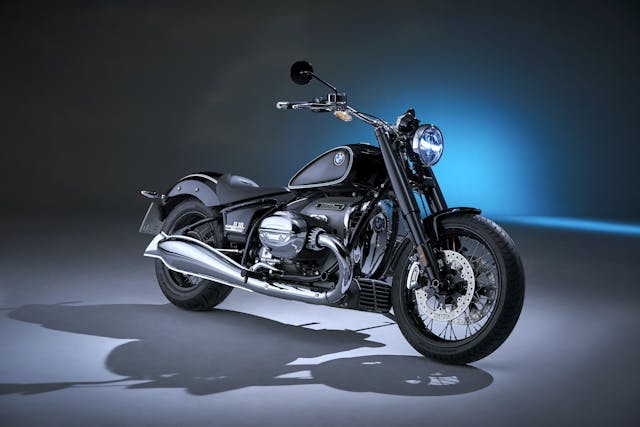
Balancing a heavy bike that’s possibly carrying a passenger and luggage, while working five separate hand and foot controls (clutch, front and rear brakes, throttle and shifter) in traffic on a hill (think San Francisco), can be tough. To the rescue comes the R18’s Hill Start Control, which automatically maintains brake pressure after you’ve come to a stop, thus holding the bike while you engage first gear and slip the clutch to move away.
Adaptive headlight
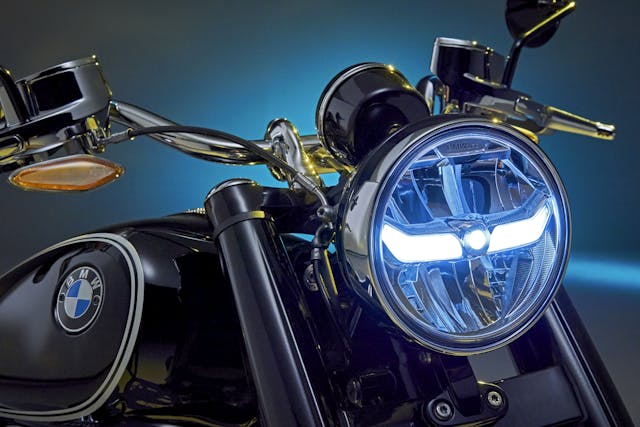
Thankfully, the R18 includes bright LED lighting all around, including both high- and low- headlight beams. Optional is the “Headlight Pro,” which includes a cornering function that directs the headlight’s beam into turns.
Multifunction instrumentation
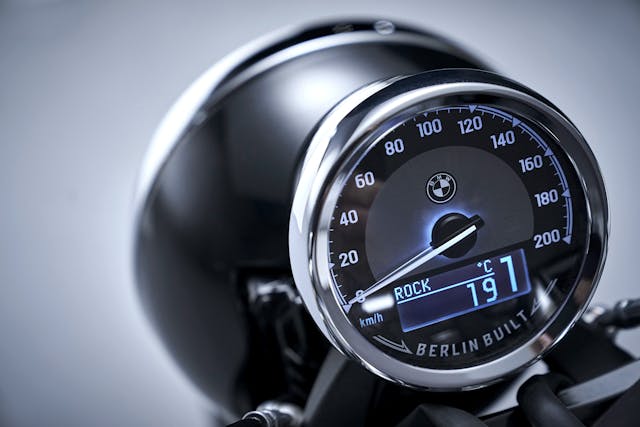
A speedometer is the R18’s only visible meter. But while the look of this multifunction gauge throws back to the 1950s, it is fully electronic inside. For instance, a menu switch located on the left handlebar allows the rider to quickly toggle between digital readouts like engine revs, odometer and trip meter, average fuel economy, average speed and more. It’s an intuitive setup that adds vital information without disrupting the motorcycle’s vintage aesthetic.
Selectable ride modes
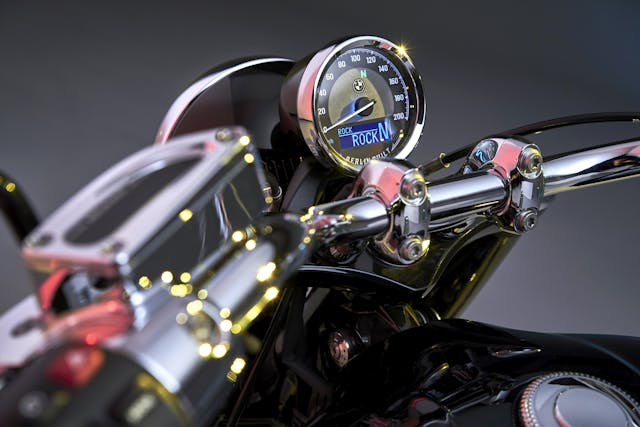
A Mode switch on the left handlebar lets the rider choose among three different throttle response and traction control maps. “Rock” delivers aggressive throttle response with wheelspin allowed (yeah, burnouts!); “Roll” provides normal throttle response and default traction control (“ASC” in BMW parlance); and “Rain” subdues throttle response and maximizes traction control for slippery conditions.
Partial integral ABS

Normally, motorcycles have completely separate front and rear braking systems, requiring fine dexterity on the part of the rider to smoothly operate. In the R18, however, the twin front disc brakes and rear brake are integrated, letting the rider manage both brakes with the right handlebar lever. Electronic brake force distribution automatically balances front/rear brake pressures to enhance stability. The rear brake lever operates the rear brake only. ABS is included as standard.
Reverse assist
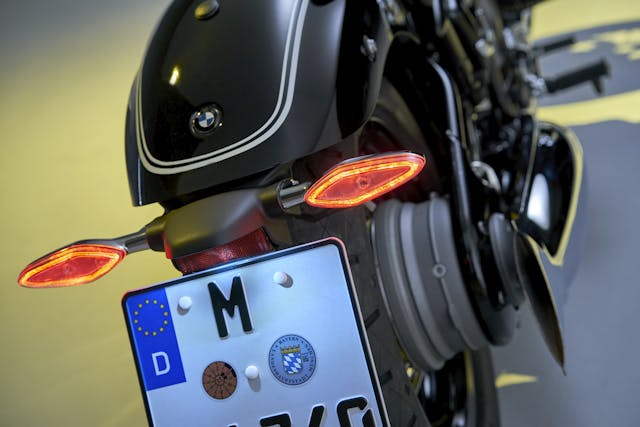
So, it turns out a bike the size of a dairy heifer can actually use a reverse gear, which BMW calls “Reverse Assist.” You engage it by flipping a gearcase-mounted lever under your left thigh, then pressing the start button on the right handlebar. Achtung! The bike creeps backward using the starter motor. It happens at a snail’s pace, so no worries about this beautiful bovine accelerating wildly backward.






















